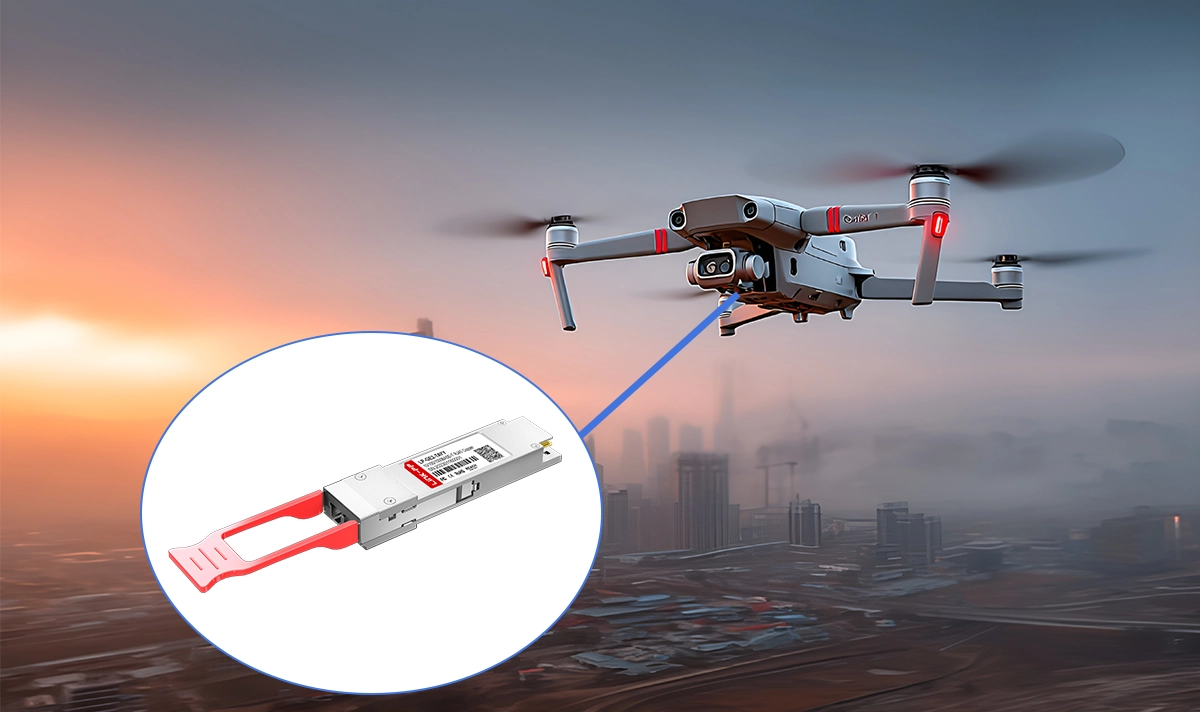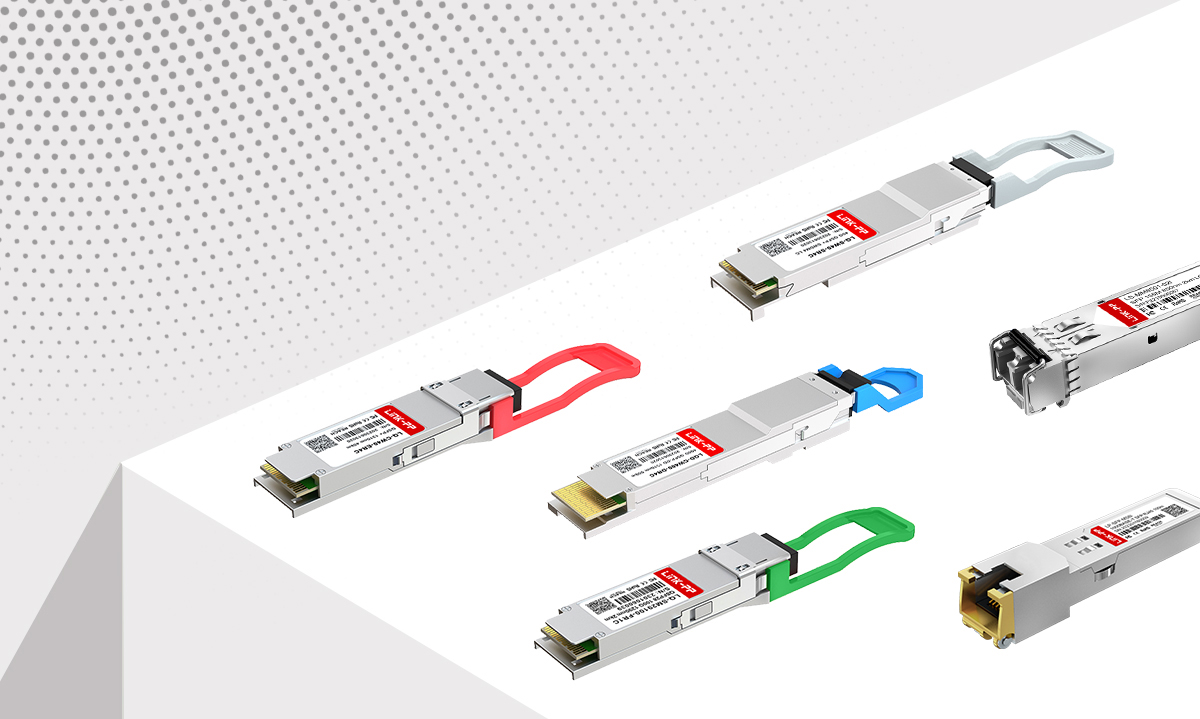
As unmanned aerial vehicles (UAVs) continue to revolutionize industries—from aerial surveying to real-time mapping and beyond—the demand for reliable, high-speed data links becomes paramount. Optical transceivers (also known as optical modules) offer a precise, robust solution: combining high bandwidth, low latency, and strong electromagnetic immunity in compact form factors. LINK‑PP leverages decades of expertise in optical networking to deliver modules ideal for drone applications.
UAV communication systems equipped with optical transceivers demonstrate lower bit error rates and higher signal-to-noise ratios, even under challenging atmospheric conditions, which expands the range of applications for drones and UAVs.
Key Takeaways
Optical transceivers enable drones to communicate with high-speed, low-latency, and secure links, improving real-time video, telemetry, and control for many UAV applications.
Advanced tracking and fiber optic technology help maintain strong, interference-free communication even in challenging environments, supporting longer missions and reliable data transfer.
Despite their benefits, optical systems face challenges like alignment issues and weather effects, which engineers address with adaptive controls and backup solutions to keep UAV communication stable.
Why Optical Transceivers Matter for Drones
What Are Optical Transceivers?
Optical transceivers convert electrical signals into optical signals and vice versa, enabling drones to send and receive data through light. Modern optical transceivers use fiber optic technology to achieve rapid, reliable, and interference-free communication. Drone fiber optic cable forms the main pathway for this data, supporting both single-mode and multi-mode fibers. Single-mode fibers allow long-distance communication with minimal signal loss, while multi-mode fibers deliver higher data rates over shorter distances. The compact design of transceivers and drone fiber optic cable reduces weight, which is critical for UAVs. Operating temperature ranges from -40°C to +85°C ensure stable performance in diverse environments. Effective thermal management, such as heat sinks and airflow optimization, protects sensitive optoelectronic components.
How They Work in UAVs
High-Bandwidth Data Streaming: Modern drones carry high-resolution cameras, LiDAR sensors, and thermal imagers. Optical modules like SFP and SFP+ enable uplinks of 1 Gbit/s to 10 Gbit/s+, essential for HD video and sensor data transmission.
Low Latency & Precision Control: Optical fiber communication drastically reduces signal delay—ensuring real-time flight control and responsive maneuvering.
EMI Immunity: Unlike RF links, optical modules are immune to electromagnetic interference from motors or nearby devices.
Compact & Rugged: With industrial-grade temperature ranges (−40 °C to +85 °C) and small footprints like SFP+, these modules meet UAV weight and size constraints.

LINK‑PP Optical Modules for UAV Integration
On LINK‑PP’s official platform, the LQ‑CW40‑ER4C QSFP+ ER4 40G optical transceiver is a powerful solution designed for high-bandwidth, long-distance communication—an ideal fit for advanced UAV platforms. This module delivers:
40 Gbps data rate over 40 km via single-mode fiber (SMF) at 1310 nm
Integrated DOM (Digital Optical Monitoring) for real-time diagnostics
Duplex LC interface, supporting fast deployment in both ground stations and airborne units
Compliance with IEEE 802.3ba 40G Ethernet and 40GBASE-ER4 standards, as well as the QSFP MSA (Multi-Source Agreement).
Thanks to its compact QSFP+ form factor and long-reach capability, the LQ‑CW40‑ER4C enables real-time UHD video transmission, sensor data offload, and command synchronization across extended ranges—without compromising signal integrity. Engineers can also refer to its detailed technical drawing and specifications to ensure seamless integration into drone communication architectures.
Integrating Optical Links into the UAV Ecosystem
Ground Station Setup: An SFP+ card in the station feeds data through fiber to the drone’s optical modem.
Onboard Optical Patch: Compact SFP cages, supported by LINK‑PP’s fiber optic connectors, mount inside drone bays.
Hybrid Communication Architecture: While RF handles command/telemetry, optical fibers—especially in tethered drone systems—carry raw sensor feeds back to the ground for processing.
Benefits & Best Practices
Benefit | Description |
|---|---|
Real-time HD streaming | uninterrupted video and sensor data. |
Extended range | Single-mode links like LQ‑CW40‑ER4C comfortably manage multi-kilometer links. |
Reliability in harsh conditions | COM/EXT/IND-grade specs sustain UAV operations under stress. |
Scalable future proofing | LINK‑PP offers 1G, 10G, 25G, 100/200G,200/400G transceivers—to grow with UAV needs. |
Best practices:
Choose between MMF and SMF based on range (10 km+ favors SMF).
Ensure end-to-end DOM support for diagnostic monitoring.
Test in EMI-rich environments to validate real-world robustness.
Future Trends
Miniaturization: Emerging Micro-SFP or SiPhotonics solutions will further reduce weight for small drone platforms.
Optical Wireless (FSO): Free-space optical links offer license-free, high-speed communication—especially effective with precise beam steering.
Edge AI Pipeline: Onboard AI processing will rely on optical-backed uplinks for efficient live-data offloading and analysis.
Applications of Optical Beam Transceivers

Real-Time Video and Telemetry
Optical beam transceivers play a vital role in real-time video and telemetry applications for UAVs. Operators use these systems to transmit high-definition video and sensor data over drone fiber optic cable, supporting instant decision-making. Many commercial UAVs rely on optical beam transceivers for stable communication links, even in areas with heavy radio interference. These applications allow tactical drones to deliver live feeds for mapping, inspection, and emergency response. The high bandwidth of drone fiber optic cable ensures that UAVs can send large volumes of telemetry and surveillance information without delay.
Surveillance and Public Safety
Surveillance applications benefit greatly from optical beam transceivers. Law enforcement agencies deploy UAVs equipped with drone fiber optic cable to monitor large events and critical infrastructure. Military operations use tactical drones for border surveillance and reconnaissance, where secure communication is essential. Optical beam transceivers provide anti-jamming capabilities, making them ideal for sensitive surveillance missions. In public safety, UAVs support disaster assessment and crowd monitoring, transmitting real-time video through robust communication channels.
Technical reports highlight the use of laser power transfer to extend UAV mission endurance. Laser diodes deliver energy to photovoltaic cells on UAVs, enabling longer surveillance and reconnaissance flights. Studies also examine controller designs and efficiency improvements for these applications.




